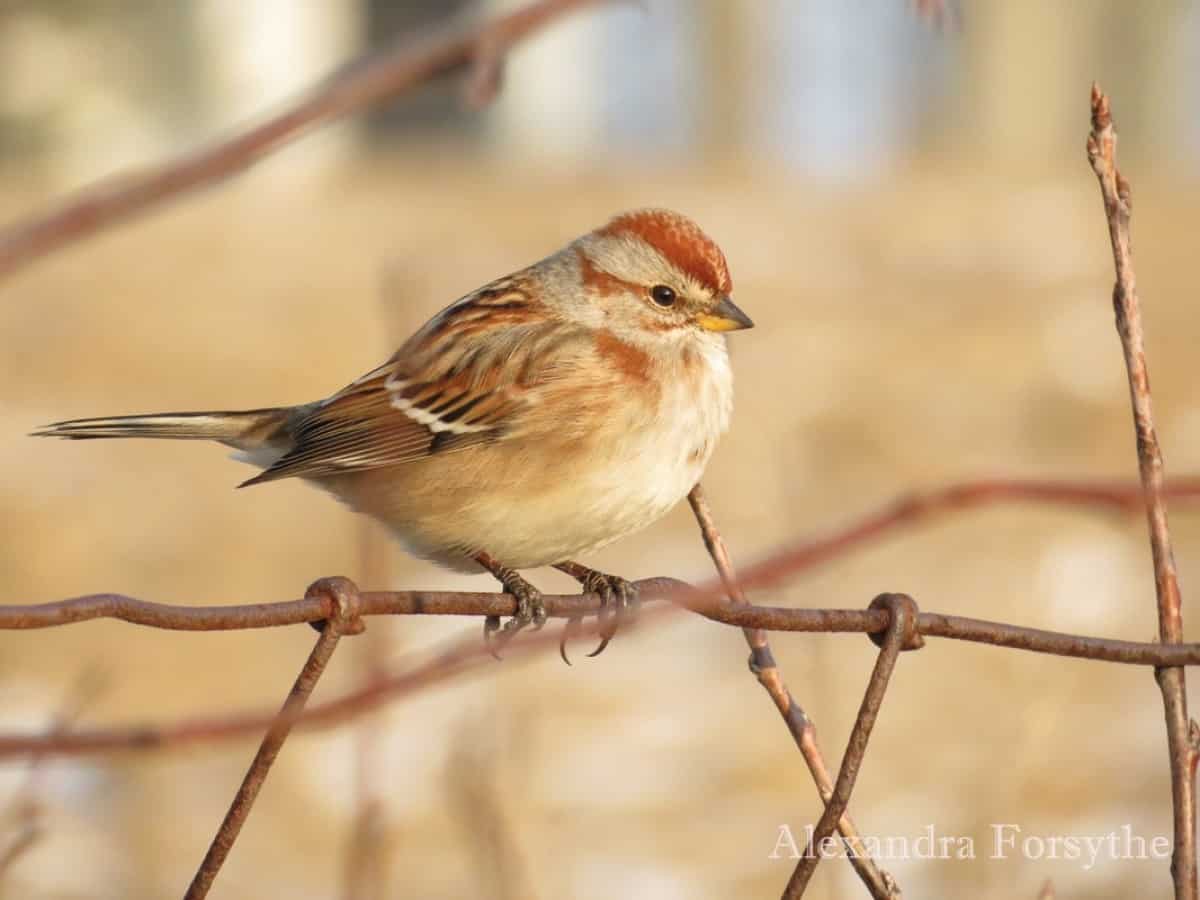 +
+
American Tree Sparrow
Photo by Alex Forsythe
Author: Alexandra (Alex) Forsythe
Are you right- or left-handed? Are you right-handed when you write, but left-handed when you perform other tasks? How about your vision? Are you right- or left-eyed? American Tree Sparrows have a preference when watching for predators: they use their left eye.
Researchers from the Department of Life Sciences at Indiana State University studied American Tree Sparrows to determine whether the birds preferred to use one eye over the other when watching for predators (“Laterality in avian vigilance: Do sparrows have a favorite eye?”, Franklin and Lima, 2001). Feeders were placed on the ground next to an obstruction, forcing the birds to choose which eye to orient away from the obstruction and toward predators. The Tree Sparrows typically turned so that their left eye was facing the predators. Interestingly, the Dark-eyed Juncos that were also included in this study used their right eye to watch for predators. Since these two species tend to forage together, favoring opposite eyes may be advantageous, allowing them to watch for danger from all sides.
In another study conducted by Indiana State University, the American Tree Sparrow was found to prefer shade over sunshine while feeding, even in the blustery winter months when the sunshine could warm them (“Wintering birds avoid warm sunshine: predation and the costs of foraging in sunlight”, Carr and Lima, 2014). Researchers placed food on a pad and controlled the amount of sunlight would reach each area of the pad. The scientists found that the birds preferred to eat in the shade, implying that the cold conditions of the shade were preferable to foraging in the sunlight where they would be more visible to predators. The birds also preferred to face south. The researchers believe this may be in response to the tendency of some predators to attack “out of the sun” to avoid detection.
In addition to being fascinating subjects for researchers, American Tree Sparrows have other interesting facts associated with them. For example, despite its name, the American Tree Sparrow spends very little time in trees, preferring instead to forage and nest on the ground or in brushy areas. Its coloration reminded European settlers of their Eurasian Tree Sparrow, and the name stuck. In the summer the American Tree Sparrow is an insectivore; in the winter it is an herbivore. Every day, it must eat about 30% of its body weight in food. If it fails to find that amount of food and water in a 24-hour period, it will likely die; going without enough food in just one day is a death sentence.
Marguerite Baumgartner studied the American Tree Sparrow extensively and contributed to the “Tree Sparrow” issue for the Smithsonian’s “Bent Life History” series. In addition to her detailed observations, she noted how much she admired these birds. She wrote: “Since the earliest days of nature lore in America, writers of the winter fields have thrilled to the cheerful warble of these hardy little visitors from the North. I shall never forget my first flock of tree sparrows, feeding companionably at the weedy border of the marsh, hanging on the weed tops like animated Christmas tree ornaments, dropping lightly to the ground and etching their delicate tracery of claw prints in the snow.”
Photo Credits:
- Alex Forsythe (featured image)
- Dave Fox
- Mike Timmons
- Mike Timmons
- Charles and Sharon Sorenson
- Charles and Sharon Sorenson
- Shari Burnett










